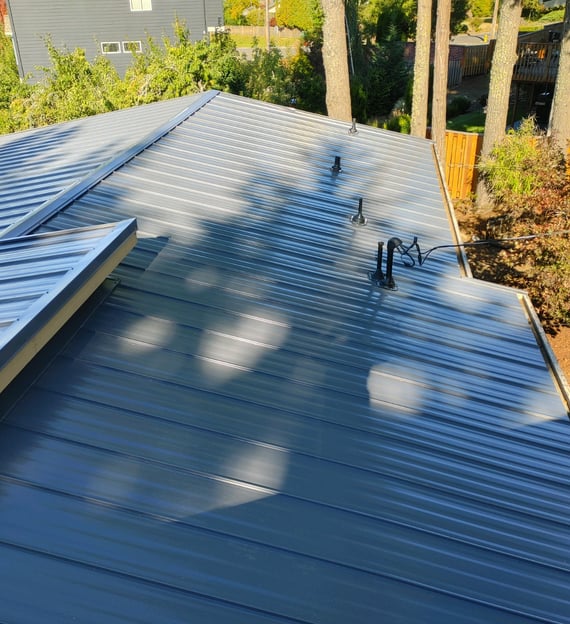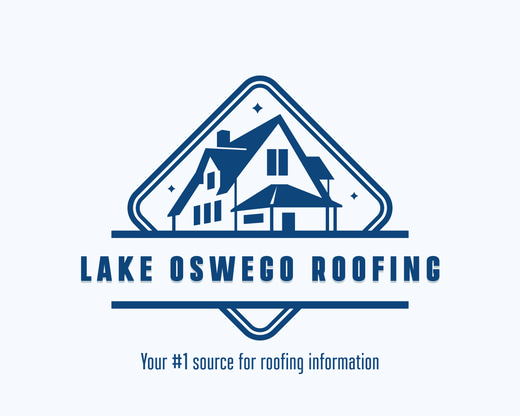The Advantages of Metal Roofs: A Durable, Sustainable, and Stylish Choice
Metal roofing has rapidly gained popularity as an efficient, long-lasting, and eco-friendly option for residential and commercial buildings. Once considered a niche material, metal roofs are now a mainstream choice due to their aesthetic appeal, durability, and sustainability. In this article, we’ll explore the benefits of metal roofing, the different types available, and why it may be the ideal solution for your next roofing project.
What Are Metal Roofs?
Metal roofing consists of panels or shingles made from metal materials like steel, aluminum, copper, or zinc. These panels come in various shapes, sizes, and finishes, allowing homeowners and builders to choose a style that fits their aesthetic preferences and functional needs. Metal roofs are known for their longevity, weather resistance, and ability to withstand a variety of harsh conditions.
Advantages of Metal Roofs
Longevity and Durability One of the key reasons metal roofs are favored is their exceptional durability. Unlike traditional roofing materials like asphalt shingles, which may need replacement every 20 years, metal roofs can last between 40 to 70 years with minimal maintenance. High-quality metal roofs are resistant to cracking, warping, or curling, which are common problems with other materials over time.
Weather Resistance Metal roofs are designed to withstand extreme weather conditions, from heavy rain and snow to intense heat and wind. They shed rainwater efficiently, preventing leaks and water damage. Furthermore, their resistance to snow accumulation makes them ideal for areas with heavy winter weather. In hurricane-prone regions, metal roofs are known to withstand high winds of up to 140 mph, making them one of the safest roofing options available.
Energy Efficiency Metal roofs are naturally reflective, meaning they can help reduce energy consumption by reflecting sunlight and heat away from the home. This reduces the amount of heat absorbed into the attic and lowers cooling costs, especially in hot climates. Some metal roofing systems also feature reflective coatings that enhance energy efficiency even further. This can lead to significant savings on utility bills over the long term.
Low Maintenance Compared to traditional roofs, metal roofs require less maintenance. They don’t need to be replaced or repaired as frequently as asphalt shingles or wood shingles. Additionally, metal roofs are resistant to issues like mildew, mold, and algae, which can lead to staining and deterioration in other materials. Routine inspections and occasional cleaning are usually all that’s needed to maintain a metal roof’s performance.
Fire Resistance Metal roofs are highly fire-resistant, making them an excellent choice for homes in areas prone to wildfires. Since metal is non-combustible, it won’t catch fire or contribute to spreading flames during a fire. Many insurance companies offer discounts on premiums for homes with metal roofs due to their fire-resistant properties.
Environmentally Friendly Metal roofing is one of the most environmentally friendly roofing materials available. Many metal roofs are made from recycled materials and can be recycled again at the end of their life cycle, reducing waste. Moreover, metal roofing systems help improve energy efficiency, which contributes to lower carbon emissions over time. For homeowners looking to invest in sustainable building practices, metal roofs are a smart choice.
Aesthetic Appeal Metal roofs offer a sleek, modern appearance that can enhance the look of a home or commercial building. Available in a wide range of colors, styles, and finishes, metal roofing can be customized to complement any architectural style, from contemporary to traditional. Some metal roofs even mimic the look of other materials, such as wood shakes or tile, providing versatility without compromising performance.


Types of Metal Roofs
There are several types of metal roofs to choose from, each with its own unique characteristics:
Standing Seam Metal Roofs Standing seam metal roofs are one of the most popular choices for residential and commercial buildings. These roofs consist of interlocking metal panels with raised seams, creating a sleek and seamless look. The standing seams also allow for expansion and contraction of the metal as temperatures fluctuate, reducing the risk of damage.
Metal Shingles and Tiles Metal shingles and tiles are designed to resemble traditional roofing materials like asphalt shingles, wood shakes, or slate tiles. They offer the same durability and weather resistance as standing seam metal roofs but with a more traditional aesthetic. These options are ideal for homeowners who want the appearance of classic roofing materials but with the superior performance of metal.
Corrugated Metal Roofs Corrugated metal roofs feature a series of repeating wavy patterns, which add a distinctive, industrial look to a building. This type of roofing is often used in agricultural, commercial, and industrial buildings, but it is becoming increasingly popular in residential applications as well.
Aluminum and Copper Roofs Aluminum and copper roofs offer an elegant and high-end finish that is both durable and lightweight. Aluminum roofs are known for their resistance to corrosion and are ideal for coastal areas with salty air. Copper roofs, on the other hand, develop a beautiful patina over time, adding character to the home. Both materials provide a unique look and excellent long-term performance.
Cost Considerations
While metal roofs generally have a higher initial installation cost compared to traditional roofing materials, their long lifespan and energy efficiency make them a cost-effective choice in the long run. Homeowners can expect to recoup the higher upfront investment through savings on energy bills and minimal maintenance costs. Additionally, the longevity of metal roofs means that the cost of replacing the roof will be much less frequent than with asphalt shingles.
Conclusion
Metal roofs offer a combination of durability, energy efficiency, and aesthetic appeal that make them a compelling choice for homeowners and business owners alike. With various types and styles available, metal roofing can be tailored to fit any project. Whether you’re building a new home, replacing an old roof, or looking for a sustainable, low-maintenance roofing option, metal roofs provide a reliable, long-lasting solution that will serve you well for decades to come.
Questions you should be asking about a new metal roof.
What is manufacturer are you using?
The brand that is being used is a big part of a metal roofing system. It's important to know the quality of the material being used as well as the warranty that goes with it.
What is the Gauge of the metal being used?
The two most common gauges (thickness) of metal are 24 and 26. It's easy to assume that 26 gauge is thicker than 24. However, 24-gauge metal has a minimum of approximately 0.023,” and 26-gauge has a minimum of approximately 0.018”. This makes 24 gauge thicker than 26 gauge.
What thickness of plywood is ideal for a metal roof?
When installing a metal roof, choosing the correct plywood size is crucial for ensuring a secure, durable, and effective roofing system. The plywood provides a solid foundation for the metal roofing panels, supporting their weight and adding structural integrity to the overall roof. Here's a guide to understanding the proper size of plywood for a metal roof. Read More...
More Roofing Options
Architectural Shingles | Presidential Shingles | Cedar Shake Shingles
Roof Replacement
Your #1 source for roofing information
Team
Get a free Quote today!
971-404-5746
Infinity Roofing & Construction
© 2024. All rights reserved.
